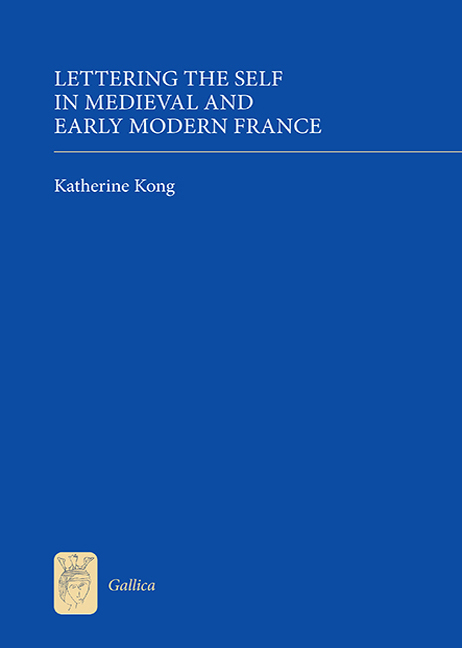Book contents
- Frontmatter
- Contenst
- Acknowledgements
- Introduction
- 1 Love Letters in the Monastery: Ambiguous Lessons and Epistolary Play in the Verses of Baudri of Bourgueil and Constance of Angers
- 2 Writing the Subjunctive into the Indicative: Commanding Performances in the Letters of Abelard and Heloise
- 3 Virilis Femina: Christine de Pizan and the Gender of Letters
- 4 The Pursuit of Spiritual Quietude in the Correspondence of Marguerite de Navarre and Guillaume Briçonnet
- 5 The Foedus Amicitiae of Etienne de la Boétie and Michel de Montaigne
- Conclusion: Conducting Oneself Through Letters
- Bibliography
- Index
- Miscellaneous Endmatter
- Frontmatter
- Contenst
- Acknowledgements
- Introduction
- 1 Love Letters in the Monastery: Ambiguous Lessons and Epistolary Play in the Verses of Baudri of Bourgueil and Constance of Angers
- 2 Writing the Subjunctive into the Indicative: Commanding Performances in the Letters of Abelard and Heloise
- 3 Virilis Femina: Christine de Pizan and the Gender of Letters
- 4 The Pursuit of Spiritual Quietude in the Correspondence of Marguerite de Navarre and Guillaume Briçonnet
- 5 The Foedus Amicitiae of Etienne de la Boétie and Michel de Montaigne
- Conclusion: Conducting Oneself Through Letters
- Bibliography
- Index
- Miscellaneous Endmatter
Summary
The widely read allegorical and encyclopedic thirteenth-century Roman de la rose features a letter with an important role to play. This is not a love letter, as we might expect given the framing story of the Rose, but rather a letter of clemency. Nature wishes to offer terms to defectors to the army of the God of Love: they can gain absolution for their treachery in exchange for renewed loyalty to her. This is a matter of considerable importance, and Nature dictates her letter to Genius, who is also charged to deliver the message. Because this is an allegory, we can expect that certain elements in the story are not necessarily to be taken at face value. However, allegorical interpretation cannot resolve the discrepancy between Nature's message of more than two thousand lines and Genius's delivery of it, which is not at all a word-for-word account – in fact it is only about half as long. This episode also presents a problem of terminology: given the oral nature and content of Nature's missive, it is perhaps not surprising that it is called a “confession,” and since it offers terms to defectors it is reasonably called a “sentence” and a “pardon”; however it is also a referred to as a “letre,” “charte,” and “sermon.” This multiplicity of function and terminology points to some of the fundamental questions of this study: what was a medieval letter? How do we read it? What can it tell us about its writer?
The episode of Nature's letter suggests that medieval letters differed in function and practice in dramatically different ways from letters today. The medieval letter was not a document that transparently made requests or reported news; it was a complicated composition that had distinct administrative, artistic, and communicative functions. It also offered a way to represent the self in relation to its various others: social superiors and subordinates; friends and lovers; teachers and students; allies and adversaries; patrons and supplicants; members of a spiritual community. These relationships were expressed both in the content and form of letters: the ars dictaminis, the highly rule-bound medieval discipline of letter writing, structured the expression of these relationships by prescribing epistolary elements that reflected the respective social status of correspondents.
- Type
- Chapter
- Information
- Publisher: Boydell & BrewerPrint publication year: 2010

